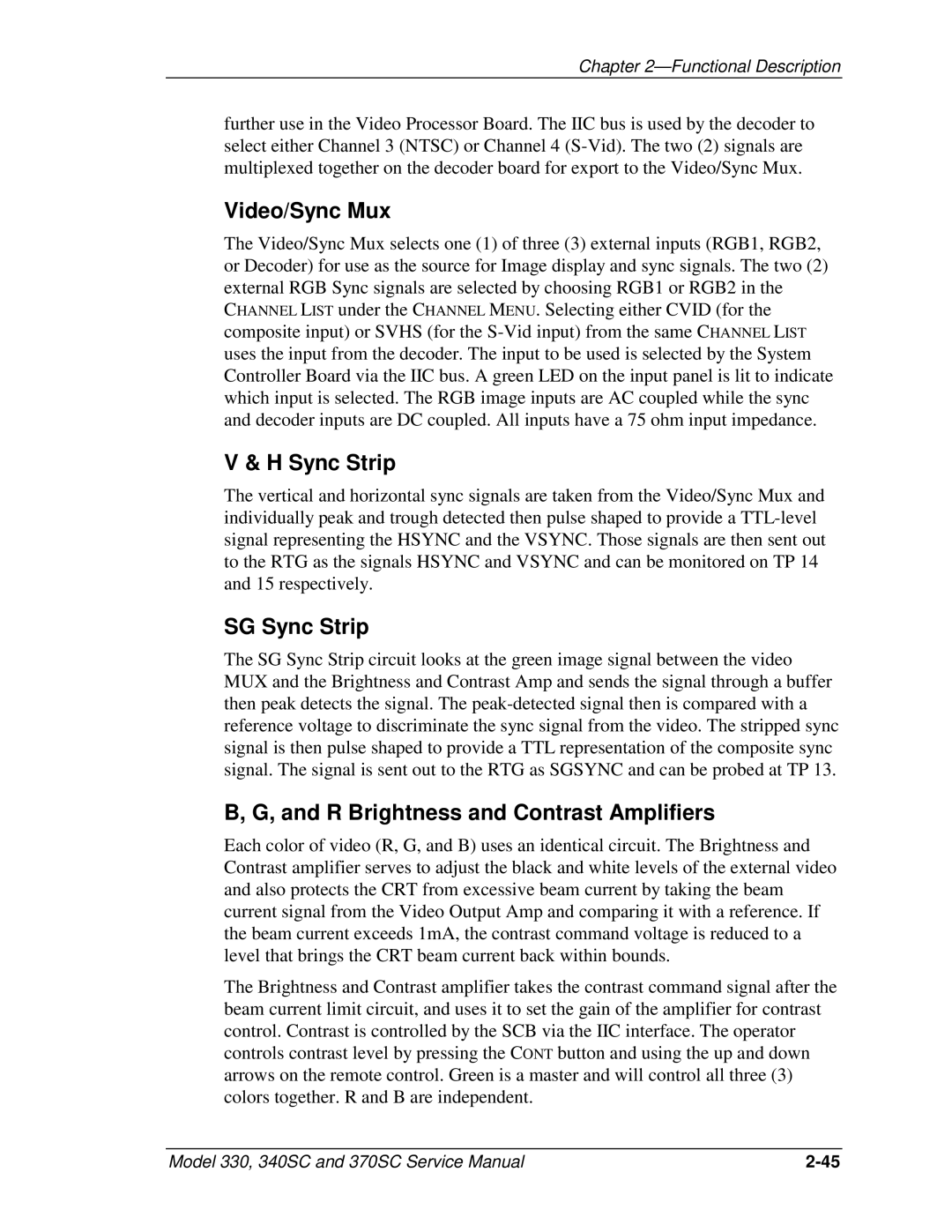
Chapter 2—Functional Description
further use in the Video Processor Board. The IIC bus is used by the decoder to select either Channel 3 (NTSC) or Channel 4
Video/Sync Mux
The Video/Sync Mux selects one (1) of three (3) external inputs (RGB1, RGB2, or Decoder) for use as the source for Image display and sync signals. The two (2) external RGB Sync signals are selected by choosing RGB1 or RGB2 in the CHANNEL LIST under the CHANNEL MENU. Selecting either CVID (for the composite input) or SVHS (for the
V & H Sync Strip
The vertical and horizontal sync signals are taken from the Video/Sync Mux and individually peak and trough detected then pulse shaped to provide a
SG Sync Strip
The SG Sync Strip circuit looks at the green image signal between the video MUX and the Brightness and Contrast Amp and sends the signal through a buffer then peak detects the signal. The
B, G, and R Brightness and Contrast Amplifiers
Each color of video (R, G, and B) uses an identical circuit. The Brightness and Contrast amplifier serves to adjust the black and white levels of the external video and also protects the CRT from excessive beam current by taking the beam current signal from the Video Output Amp and comparing it with a reference. If the beam current exceeds 1mA, the contrast command voltage is reduced to a level that brings the CRT beam current back within bounds.
The Brightness and Contrast amplifier takes the contrast command signal after the beam current limit circuit, and uses it to set the gain of the amplifier for contrast control. Contrast is controlled by the SCB via the IIC interface. The operator controls contrast level by pressing the CONT button and using the up and down arrows on the remote control. Green is a master and will control all three (3) colors together. R and B are independent.
Model 330, 340SC and 370SC Service Manual |
